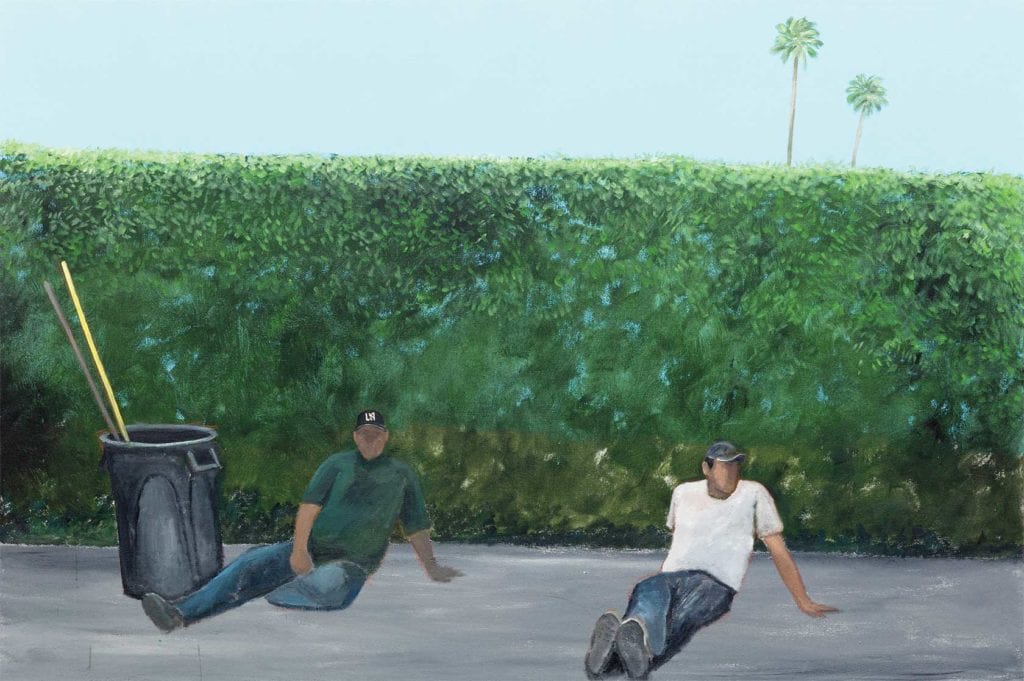
The Museum of Fine Arts has launched an aggressive campaign to acquire works by contemporary artists. They have identified works from a list of 24 artists and plan to have finalized the acquisitions by as early as October of this year. The acquisition list is perhaps one of the most diverse and localized in the museum’s history.
“We wanted to add artists to the collection that we all felt really strongly about,” says Reto Thüring, Beal Family Chair of the Department of Contemporary Art at the museum. “We also wanted to support artists in this very specific moment by acquiring works by them, and by doing that nimbly and quickly so there would be an actual transaction happening to support their careers and livelihoods.”

Lumumba’s Harp, 2013, Jas Knight. Oil on linen. Courtesy, Museum of Fine Arts, Boston. Photo courtesy of the artist.
The turnaround time for these acquisitions has been astounding, particularly for a museum of the MFA’s size, which requires a rigorous process for formally acquiring works. Thüring says the accessions committee meets four times a year to discuss and approve acquisitions and there are many elements involved, including the physical presence of the work at the museum, which is particularly challenging during the COVID-19 pandemic as the museum is shut down.
Thüring estimates that by Wednesday, June 17 the museum will have officially acquired works by at least eight artists. That’s less than three weeks after the program was officially announced on May 28. Thüring says the team is hoping to have all the works acquired by October. This quick progression through the somewhat bureaucratic process of acquisition demonstrates a genuine desire to support these artists during a challenging time.
It also demonstrates a desire to support Boston’s art community. Thüring says about two-thirdsof the acquisitions list are local Boston artists, and many of them are black, including Stephen Hamilton, Ekua Holmes, Lavaughan Jenkins and Anthony Young.
“First and foremost, we’re an institution not just for Boston, but of Boston. The MFA wouldn’t exist without the communities that surround it,” says Thüring. “It is a huge number of works by a younger generation of artists that we haven’t really added to that degree at such a pace in a really long time, or if ever, to the collection.”
Concurrently, the museum is featuring a weekly “Instagram takeover” by a local or international artist every Friday. They plan to run the takeovers until the museum opens its doors again. Anthony Young, one of the artists whose work is slated for acquisition, took over the Instagram stories on Friday, June 12 to discuss his intimate portraits and exploration of police brutality and black manhood. His takeover can be seen in the ‘Artist Takeover’ highlight on the MFA’s Instagram.
This commitment not just to contemporary artists but to young, diverse, Boston-based artists is an encouraging leap forward for the MFA, which has historically prioritized non-local, often white artists.
“This list of artists is certainly indicative of ways we can rethink the collection … by expanding our understanding of what stories we tell, whose stories we tell,” says Thüring. “I think these artists that we’re bringing in will bring an enormous amount of energy that will really help shake off some of the lenses through which we’ve been looking at art history.”







